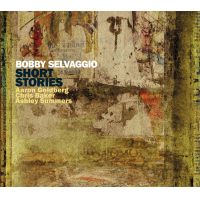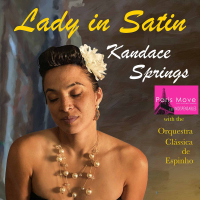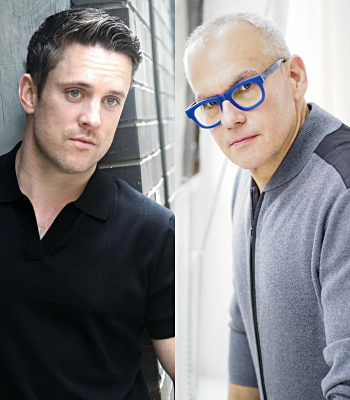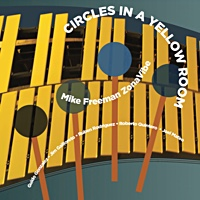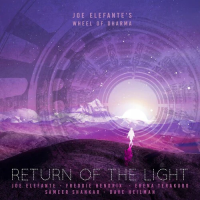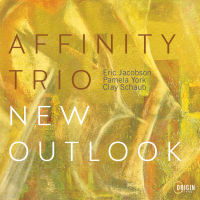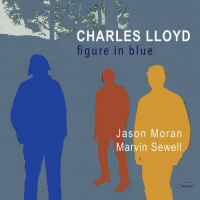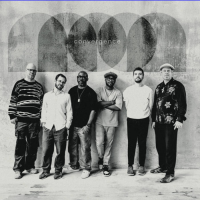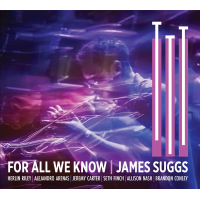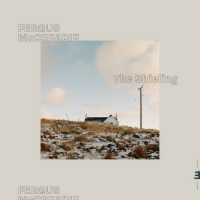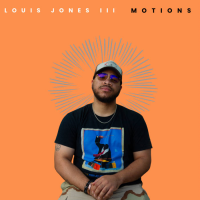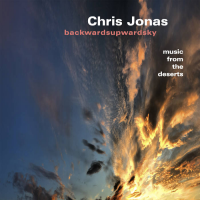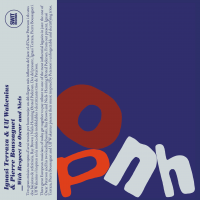Home » Jazz Articles » Extended Analysis » Steve Khan: Subtext
Steve Khan: Subtext
But more about that later. Subtext continues the thread that's run through his recent Tone Center recordings, specifically Parting Shot and 2007's Borrowed Time—two records that explore and exploit, more than any in the guitarist's long career, his interest in all things Latin and Afro-Cuban. But Subtext also represents both change and some of Khan's most flat-out soulful playing ever.
Subtext also represents, from a guitarist who has long eschewed meaningless technical displays, some of Khan's most overtly virtuosic playing since his early '80s epiphany and attendant paradigm shift towards the more spartan approach that began around the time of his overlooked solo guitar masterpiece, Evidence (Arista/Novus, 1980), but became more fully formed with the release of Eyewitness (Trio, 1981). That's not to suggest Khan is now sacrificing quality for quantity, or substance for style—far from it—but on Subtext he stretches out more and demonstrates that he's absolutely capable of pyrotechnic displays; but, as befits a guitarist who deserted "look at me" demonstrations decades ago, only at exactly the right time. It just seems that, on Subtext, there are plenty more of them.
There are some changes, too, in the personnel, most notably the absence of Parting Shot's bassist, Anthony Jackson (replaced by Borrowed Time's equally capable Ruben Rodriguez), and percussionist Manolo Badrena, whose chair is left empty, rendering Khan's core group a leaner quintet. There's certainly nothing missing, though, as he works his way through a nine-song set list that combines imaginative rearrangements from some usual suspects (Wayne Shorter, Thelonious Monk and Ornette Coleman—three names that crop up, time and again, on Khan recordings, in the case of Monk and Shorter right back to Evidence); one name that's not been heard since Khan's 1991 Blue Moon date Let's Call This (trumpeter Freddie Hubbard); another new to the "Khan treatment" (saxophonist Greg Osby); and one standard that, in the guitarist's hands, is anything but standard. Contrasting Parting Shot's preponderance of original compositions, Subtext contains just three Khan-penned titles but, like his playing, quality always trumps quantity—not, of course, that Parting Shot's seven Khan compositions sacrificed anything.
One of the most impressive of Khan's reworks here is his reinvention of Shorter's "Infant Eyes," first heard on the saxophonist's classic Speak No Evil (Blue Note, 1964), but also covered by the guitarist on Evidence. Some of the voicings that appeared on Khan's much more impressionistic reading on Evidence remain, but this time, with a group to interpret it, the guitarist aims for a propulsive 6/8 Afro-Cuban groove, driven by Rodriguez, locked tongue-in-groove with Chambers' visceral kick drum and backbeat, which contrast with the drummer's riveted snare to still allow this truly imaginative arrangement to breathe—an objective enhanced further by longtime musical partner Rob Mounsey's orchestrations, which augment Khan's voicings and support his solo, all the while buried in the weeds in the mix in a way rarely heard on orchestrated recordings.
As with his work on Parting Shot, this is far from "Khan with strings"; instead, Mounsey's orchestrations augment the music rather than dominating it, and add exactly what each song needs—nothing more, nothing less. On Osby's complex and cerebral "Heard"—first appearing on the saxophonist's Further Ado (Blue Note, 1997), but a tune which Khan performed with Osby and drummer Terri Lyne Carrington on tour a few years later—Mounsey doubles Khan's thematic lines with a curious instrumental combination that, as Khan recalls, came from a desire to add a some melodic instrumental blends that ranged from "the old Jazz Crusaders sound with tenor sax and trombone," and moved to "Miles [Davis]' muted trumpet and Bennie Maupin's bass clarinet." Mounsey's ultimate choice of bass clarinet and piccolo is an unusual one...but it works, as does the Fender Rhodes he adds to the mix. But it's when, during Khan's extensive solo, Rhodes and orchestrated bass clarinet and piccolo synch up tightly with Marc Quiñones' timbal and cymbal crashes, that a real window opens into the kind of detail which Khan puts into each and every song.
Mounsey also plays keyboards on Khan's harmonically sophisticated but eminently lyrical "Blue Subtext," and adds orchestrations to four more tracks, along with choir ("coro") on the bright and bubbly "Cada Gota de Mar," which the guitarist wrote with and for Uruguayan singer Mariana Ingold, who is also featured on the track. He also invites old friend, Gil Goldstein, to add some ethnically appropriate accordion, while he brings another longtime musical companion, Randy Brecker, to the date, contributing flugelhorn to an opening rework of Ornette Coleman's "Bird Food," from the saxophonist's classic, groundbreaking and prescient Change of the Century (Atlantic, 1960). Again, the devil's in the details; just as on "Infant Eyes," where Khan overdubs a muted, single-note guitar line that subtly helps drive the pulse along at certain points, on "Bird Food" he places a whammy bar-driven Fender guitar low in the mix, but there just enough to accentuate aspects of Coleman's melody line, doubled by Brecker and Khan's more regularly employed hollow body electric.
Anyone who knows Khan knows that when he dives into a project, it's complete immersion, and while there is plenty of interpretive space on Subtext, there are also constant reminders of just how much detail is programmed into these easygoing grooves and sophisticated harmonic arrangements. Even the time between tracks is carefully considered. As Khan explains, "Because of the way that most people listen to music in contemporary life—meaning that no one listens to an entire album in one sitting—I decided to do something a little different. I decided to simply put three seconds in between each song to give the listener a moment to take a deep breath before the next song began. In the case of the beautiful ballad, "Never Let Me Go," we decided to put in four seconds before and after that tune. We also decided to put four second before [Monk's] "Hackensack." These longer gaps aren't something that is necessarily noticed on a conscious level; they're simply something that's felt.
"Hackensack," Subtext's penultimate track, is Khan's homage to Thelonious Monk, the artist he has covered more than any other, devoting an entire side to the piano legend on Evidence and including a Monk tune on no less than eight recordings in the guitarist's 20-strong discography as a leader/co-leader. Quirky, as expected, it still effortlessly grooves in a very different way to the more elegantly swinging (but still idiosyncratically Monkian) version Khan released with Ron Carter and Al Foster on Headline (Blue Moon, 1992). Once again, Khan overdubs a whammy bar-driven guitar to help punctuate the end of melody on one of just two tunes on which Mounsey does not appear.
The keyboardist/arranger does, however, help Khan with the guitarist's original closer, "Bait and Switch," a mid-tempo, "cha-cha-cha," altered and extended 16-bar blues at its core, bringing together many of the components heard throughout Subtext: layered and harmonized guitars; melody lines doubled by Mounsey's added orchestration—along, in this case, with some chime-like sounds that augment Khan's wordless vocals that come at the end of the blues cycle; and percussion...plenty of percussion, here giving Chambers the final word as he solos over the song's long, closing vamp that slowly fades to black.
The reason to come back and record Subtext was the appearance of a small bump on the palm of Khan's left hand. Ultimately diagnosed as Dupuytren's Contracture, it's a condition that could worsen, resulting in an end to Khan's career as a guitarist...or it might remain stable and unchanged. What the future may hold is uncertain- -but then, it always is—and so Khan chose to record this album in the event that it may well have to be the truly final word in the guitarist's four-decade career.
The why for Subtext may be serious—and we can all hope that it isn't, so that it's not the final album Khan thought Parting Shot would be. Given how consistently superb the album is in every way—from the intimate details of the writing and arranging to some of Khan's best guitar work ever—it's unknown whether the change that necessitated this recording will make it his swan song, but if Subtext were to be Khan's final words as a guitarist, they'd be words upon which he'd have trouble improving. With Subtext, Khan has once again raised his own bar on an album that easily stands as one of the best of his career.
Track Listing
Bird Food; Blue Subtext; Baraka Sasa; Infant Eyes; Heard; Never Let Me Go; Cada Gota de Mar; Hackensack; Bait and Switch.
Personnel
Steve Khan
guitarSteve Khan: guitar, voice (9); Rubén Rodriguez: electric bass, baby bass; Dennis Chambers: drums; Marc Quiñones: timbal, bongo, percussion; Bobby Allende: conga, bongo (1); Randy Brecker: flugelhorn (1); Rob Mounsey: keyboards (2, 5), orchestrations (3, 4, 6, 7, 9), coro (7); Gil Goldstein: accordion (7); Mariana Ingold: voice (7).
Album information
Title: Subtext | Year Released: 2014 | Record Label: Tone Center
Tags
PREVIOUS / NEXT
Support All About Jazz
 All About Jazz has been a pillar of jazz since 1995, championing it as an art form and, more importantly, supporting the musicians who make it. Our enduring commitment has made "AAJ" one of the most culturally important websites of its kind, read by hundreds of thousands of fans, musicians and industry figures every month.
All About Jazz has been a pillar of jazz since 1995, championing it as an art form and, more importantly, supporting the musicians who make it. Our enduring commitment has made "AAJ" one of the most culturally important websites of its kind, read by hundreds of thousands of fans, musicians and industry figures every month.





